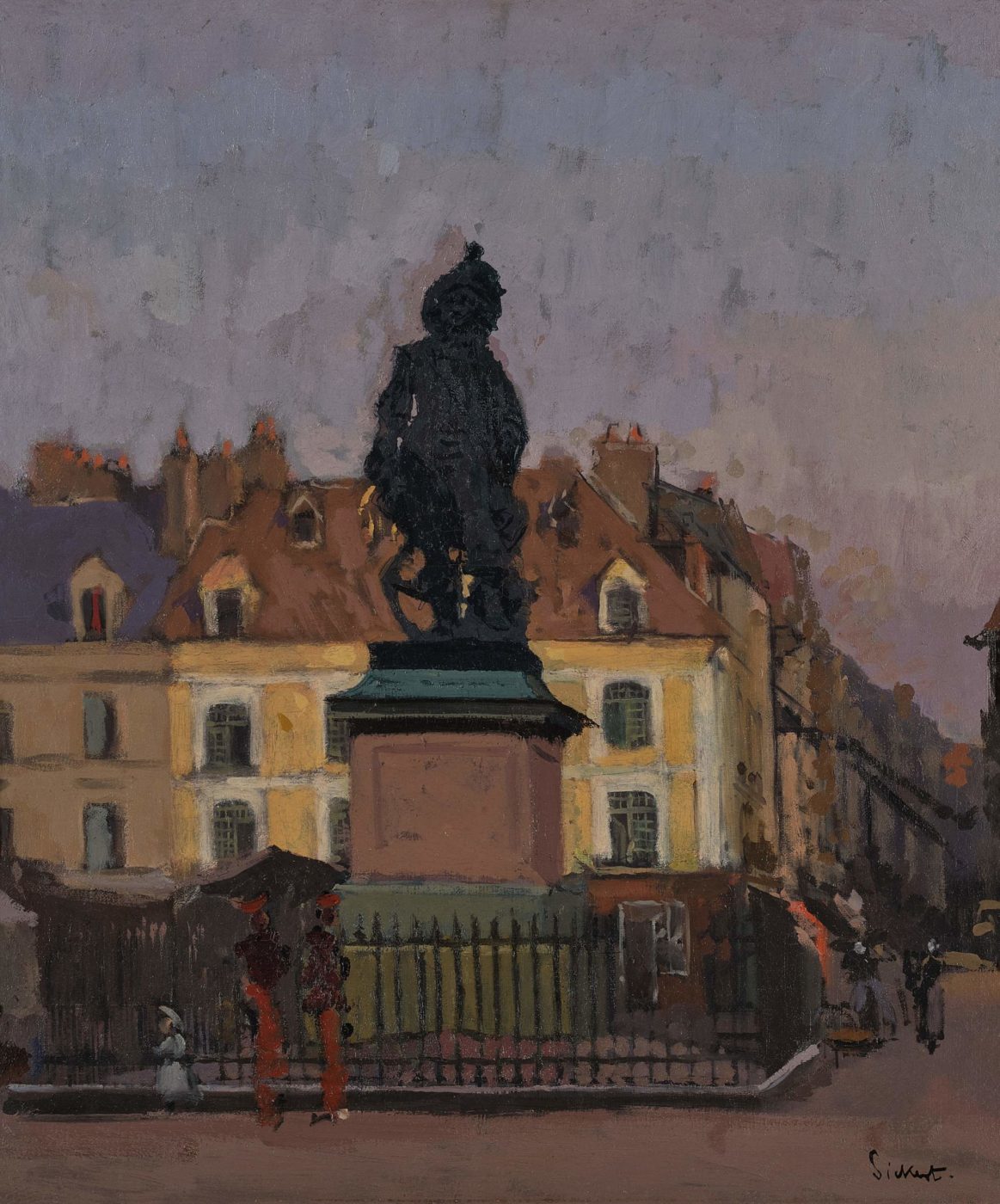Le Grand Duquesne, Le Grand Duquesne, 1899

£ click for price and more information
Canvas
21½ x 18in (55 x 46 cm)
Signed
Collections: Probably Gustave Cohen, Paris and his sale Galerie Petit May 24,1929 (79); Walter Fletcher, CBE, MP; His sale Christies, Nov 1,1957 (59); With Agnew’s; Victor Montagu, Viscount Hinchingbrooke; Sotheby’s June 22, 1994 (44); With The Fine Art Society; Count Natalia Labia,Capetown; Sotheby’s, December 4,2002(25) bt. Agnew’s; sold in 2006 to William J. Levy, New York and thence by descent
Exhibited: Agnew’s Sickert-Centenary Exhibition 1960 (67); Eastbourne,Towner Art Gallery Sickert in Dieppe 1975 (15);Browse and Darby Sickert 1981 (3)
Literature: W.Baron Sickert 1973 no.111,p.217 and 319,fig 78; W.Baron Sickert 2006 (125), repr. colour plate and p.38
Le Grand Duquesne is the popular name for the statue of Admiral Duquesne in the Place Nationale, Dieppe. Duquesne was a Dieppe native who famously defeated the Dutch off the coast of Sicily in 1676.The statue unveiled in 1844 is the work of Antoine Laurent Danton (1798 – 1878), an artist Sickert admired and collected. During Sickert’s permanent residency in Dieppe between 1898-1905 the statue was one of his favourite and most oft-repeated subjects. Wendy Baron considers this to be the first in the series. The various versions differ primarily in the cast of figures in the foreground although it can be said that this picture most vividly captures the Admiral’s swaggering presence.